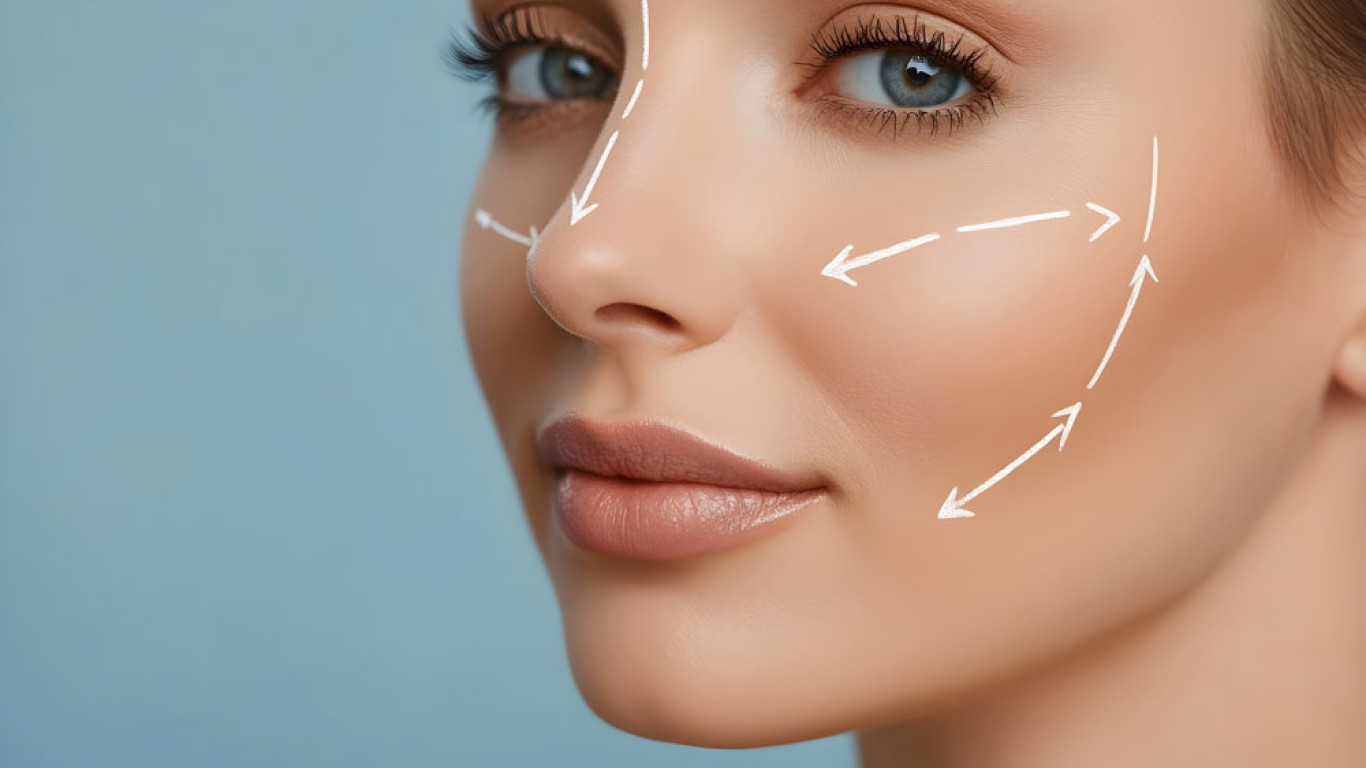Introduction
Neck contouring remains an important part of facial refinement. Changes in this region often include banding, sagging and loss of definition around the jawline. As techniques continue evolving, patients now have multiple options for improving this area with precision. Two of the most requested procedures are the surgical neck lift and the Nefertiti neck lift, a non-surgical technique using targeted injectables. Although both address the lower face and neck, they work in different ways. This guide outlines how each method operates, their expected outcomes, and how suitability is determined in 2025.
What is a Neck Lift?
A traditional neck lift is a surgical procedure designed to tighten underlying muscles, remove excess skin, and redefine the neck structure. This technique directly treats structural changes in the platysma muscle, deep tissues, and skin. Surgeons may combine it with liposuction when fatty deposits are present. The procedure involves incisions placed around the ears or under the chin. Through these openings, deeper structures are tightened and repositioned. Excess skin is removed only after the foundational tissues have been corrected. The neck lift is considered the most effective option for moderate to significant structural changes.
What is a Nefertiti Neck Lift?
The Nefertiti neck lift is a non-surgical technique that uses injectable neuromodulators to relax the platysma bands. This allows the jawline and neck to appear more defined by reducing downward muscle pull. Rather than removing skin or tightening tissues, it rebalances muscle activity across the lower face. The treatment targets specific platysma segments along the jawline and upper neck. By weakening these bands, vertical pulling decreases, supporting a smoother contour. It’s best suited for mild-to-moderate concerns, especially early banding or reduced sharpness along the jaw.
Structural Differences Between Neck Lifts and Nefertiti Neck Lifts
Although both address the neck region, they operate on different layers.
- A surgical neck lift corrects deeper structures including the platysma and skin.
- The Nefertiti neck lift affects surface muscle activity only.
These differences determine which method is appropriate for each type of change. Structural laxity requires surgery, while early muscle-related banding can respond well to injectables.

Suitability for Patients in 2025
Suitability depends on anatomical findings rather than age alone. Patients with visible sagging, separated platysma edges or excess skin usually require surgical correction. Meanwhile, individuals with early lower face tension or minimal laxity may choose the Nefertiti neck lift for targeted improvement. Assessment includes evaluating skin elasticity, depth of banding, fat distribution and neck angle. Advanced imaging tools also help clinicians measure symmetry and support accurate planning.
How a Surgical Neck Lift Works
The surgical neck lift involves several steps:
- Firstly, incisions provide access to deeper structures.
- Secondly, the platysma muscle is tightened or repositioned.
- Thirdly, excess skin is trimmed following internal correction.
- Lastly, incisions are closed along natural folds to reduce visibility.
This structured approach addresses multiple layers simultaneously, offering comprehensive refinement for more advanced anatomical changes.
How a Nefertiti Lift Works
The Nefertiti neck lift uses a series of targeted injections along the lower face and upper neck. Neuromodulators weaken the platysma, which normally pulls downward on the jawline. Reducing this pull creates a cleaner contour. The procedure takes only minutes, offers minimal interruption and requires regular maintenance sessions. Although surface-focused, it remains one of the most precise non-surgical techniques for early neck and jawline refinement.
Differences in Expected Outcomes
A neck lift delivers structural reshaping. It corrects deeper laxity, removes excess skin, and adjusts muscular support. This results in long-term anatomical change. A Nefertiti neck lift produces subtler results by modifying muscle tone. It cannot remove skin or tighten deeper tissues. Therefore, expectations should align with the technique’s capabilities. It’s ideal for early intervention or maintaining shape after previous treatments.
Treatment Planning in 2025
Modern treatment plans rely heavily on imaging tools that map tissue thickness, neck angle, and muscle patterns. AI-assisted systems detect early changes, allowing clinicians to design personalised strategies. For surgical candidates, these systems guide incision placement, tension assessment, and internal planning. For non-surgical candidates, mapping ensures accurate injector placement for a balanced Nefertiti neck lift result.
Conclusion
Choosing between a neck lift and a Nefertiti neck lift depends on the depth and nature of anatomical changes. Surgical lifting corrects structural laxity, whereas neuromodulators address muscle-related banding. Accurate assessment, advanced imaging and clear procedural understanding ensure the most appropriate treatment pathway.
For more information about Nefertiti neck lifts and to book a consultation visit the ACIBADEM Beauty Center website.
Frequently Asked Questions
It targets platysma activity to reduce downward muscle pull.
It is required when deeper laxity or excess skin is present.
Surgical results last longer, while injectables require maintenance.
Yes, combining them addresses both structural and muscle-related issues.
Yes, imaging supports precision for both surgical and non-surgical techniques.












